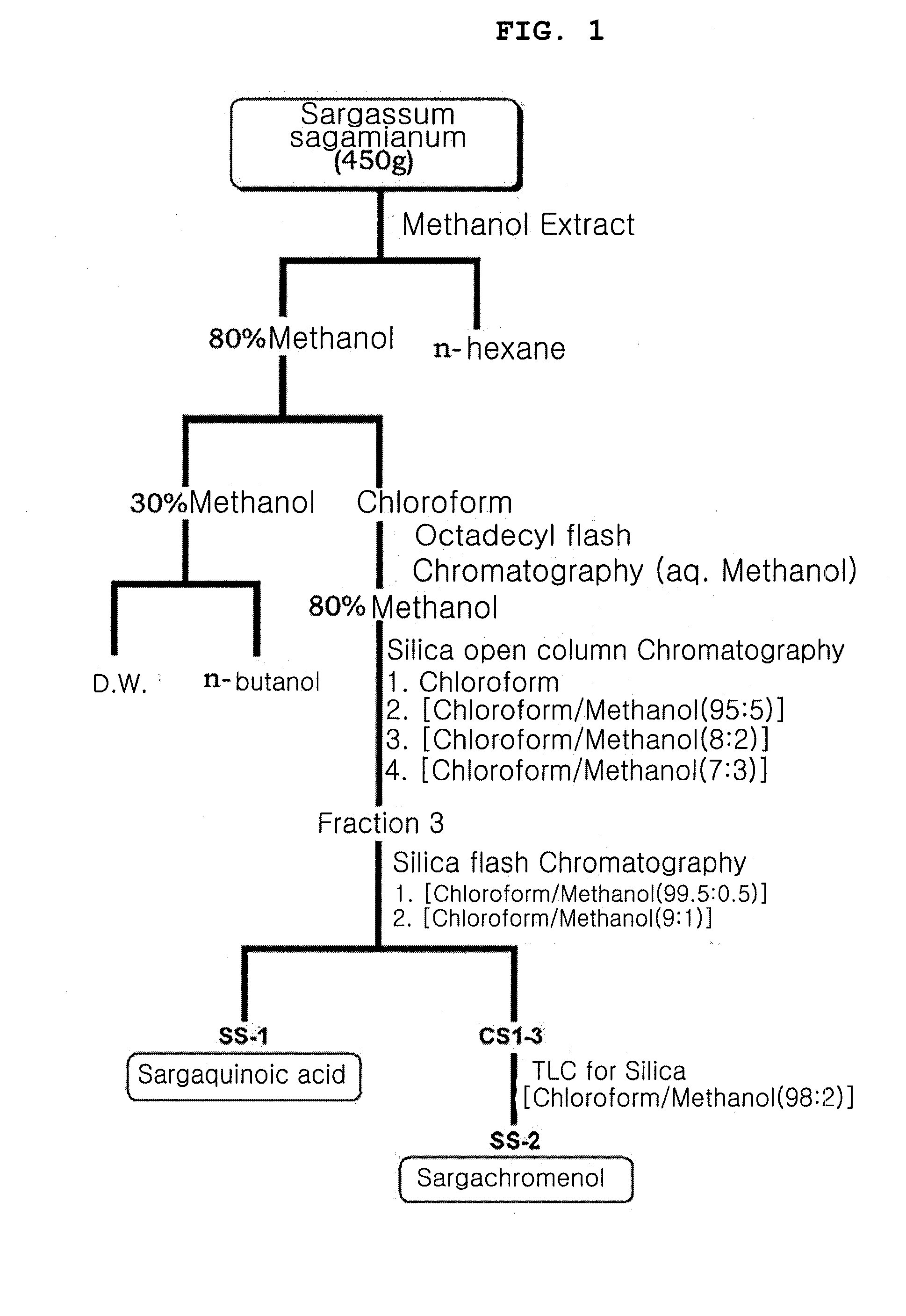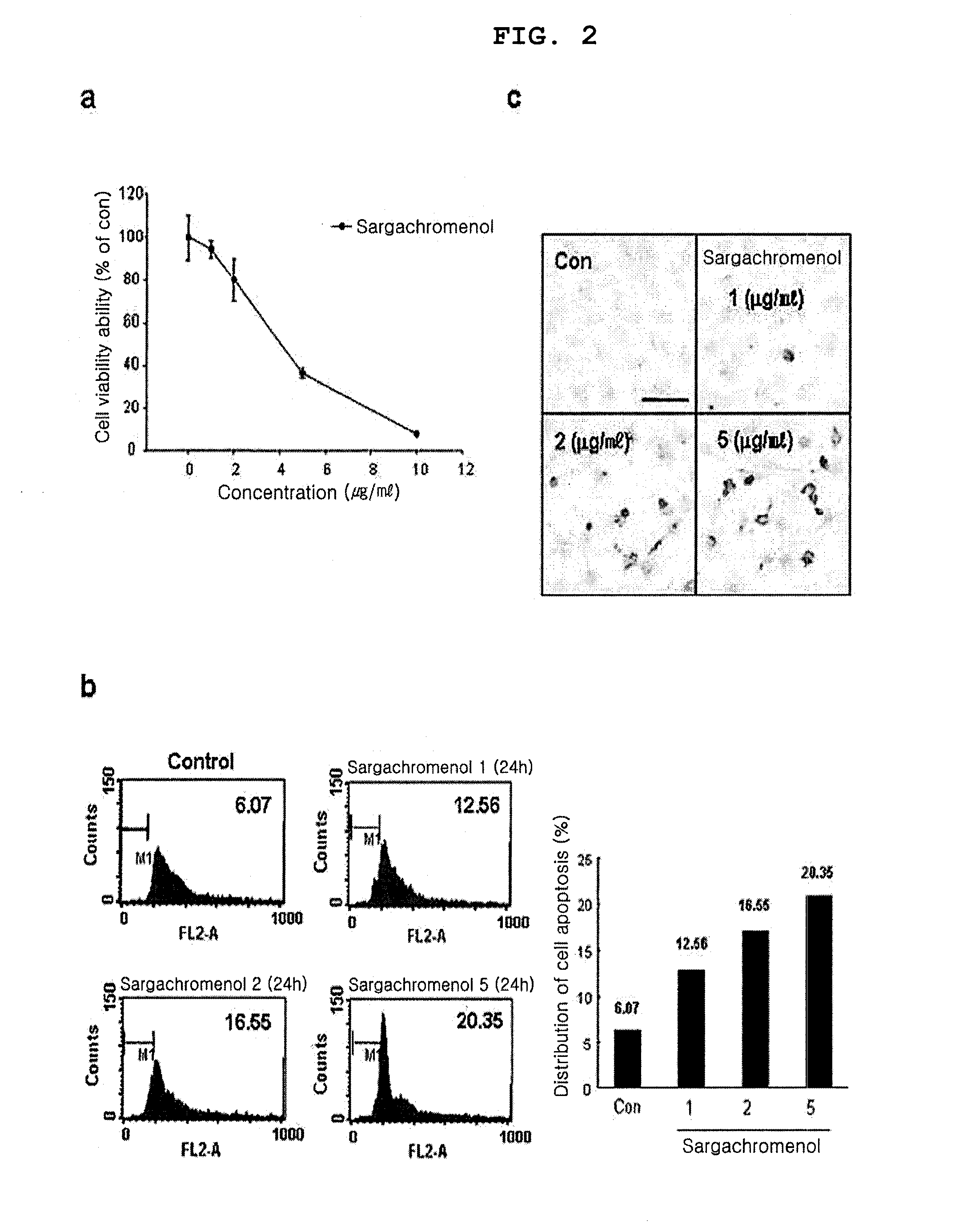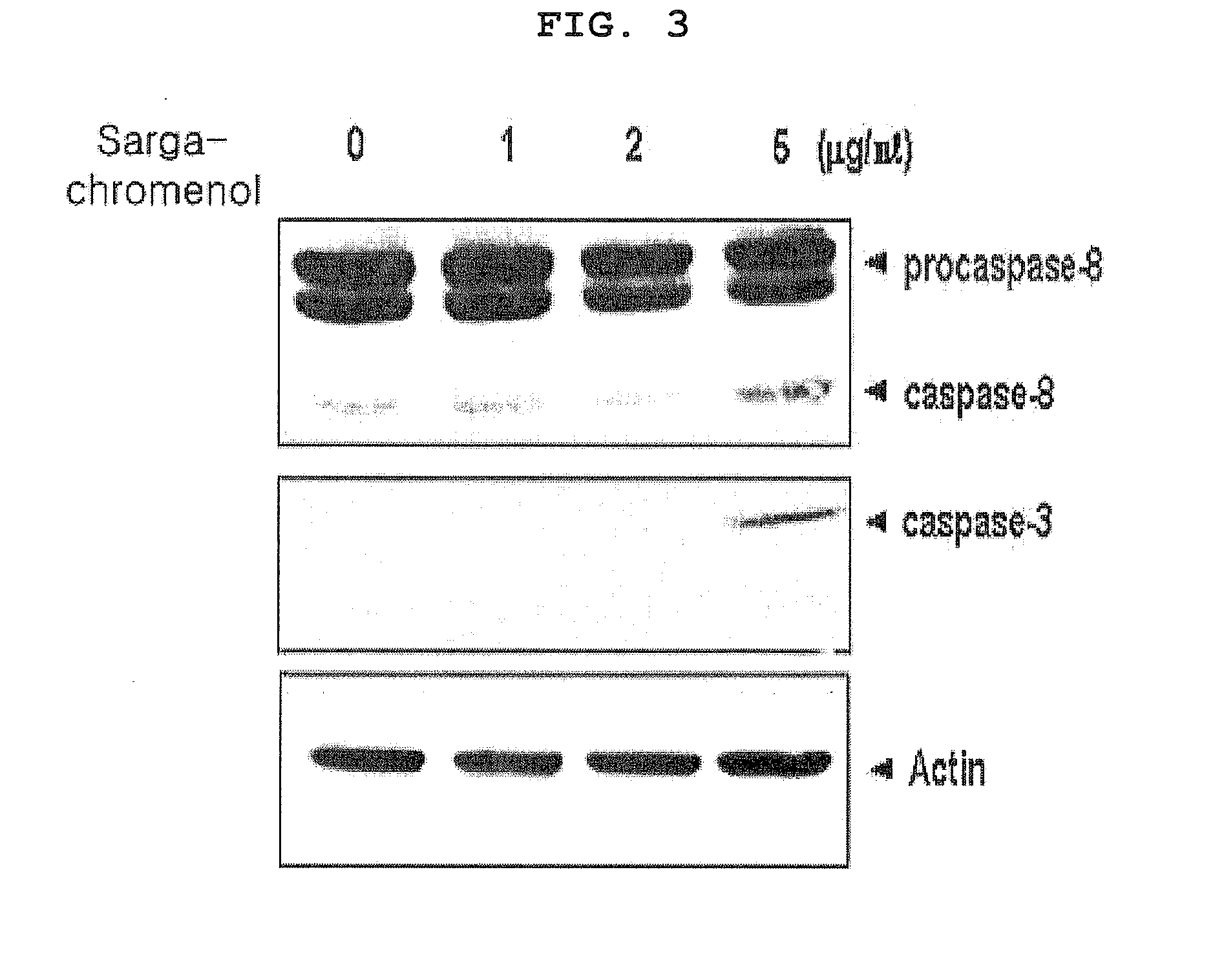Novel use of sargachromenol
a technology of sargachromenol and sargachromenol, which is applied in the direction of biocide, plant/algae/fungi/lichens, biocide compositions, etc., can solve the problems of large number of problems, inability to maintain skin, and constant generation and loss of skin, so as to enhance the apoptosis of human keratinocytes, enhance the apoptosis effect of sargachromeno
- Summary
- Abstract
- Description
- Claims
- Application Information
AI Technical Summary
Benefits of technology
Problems solved by technology
Method used
Image
Examples
example 1
Extraction and Isolation of Sargachromenol
[0039]450 g of Sargassum sagamianum (obtained in Seongsan, Jeju) was powdered by a grinder, and then repeatedly extracted with 4 L of 100% methanol at room temperature for 24 hours, for 3 times. The extract was concentrated using a rotary evaporator (Buchi). About 38 g of methanol extract was obtained. All the 38 g of methanol extract was dissolved in 80% methanol and subjected to solvent fractionation using n-hexane to remove nonpolar materials. The remaining active fraction of the 80% methanol layer was further fractionated into a 30% methanol layer and a chloroform layer. The 30% methanol layer was further fractionated using water and n-butanol. The chloroform layer was subjected to octadecyl silica flash chromatography using methanol solvent, and then 12 g of 80% methanol fraction was obtained. About 2 g of the 80% methanol fraction was subjected to silica column chromatography, using 100% chloroform and mixture solvents of chloroform an...
example 2
Investigation of Cytotoxicity of Sargachromenol
2-1. Cytotoxicity Analysis by MTT Assay
[0040]Cytotoxicity effect of the sargachromenol of the present invention isolated and purified in Example 1 on human keratinocytes HaCaT was investigated by MTT cell viability analysis.
[0041]HaCaT cells were obtained from Professor N. Fusenig of the German Cancer Research Institute. The HaCaT cells were incubated in DMEM medium containing 10% FBS (Hyclone), 100 unit / mL penicillin and 100 μg / mL streptomycin at 37° C., in a 5% CO2 incubator. During the incubation, cell viability and number of cells were measured periodically using a hemacytometer (Neubauer, Germany) by the trypan blue exclusion method. In all experiments, initial cell viability was maintained over
[0042]The cultured HaCaT cells were transferred to a 96-well plate, with 5×104 cells / well, and incubated at 37° C. in a 5% CO2 incubator for 24 hours. Then, the cultured HaCaT cells were treated with 0, 1, 2, 5 or 10 μg / mL sargachromenol, an...
example 3
Keratinocyte Destroying Effect of Sargachromenol
[0047]Human keratinocytes HaCaT cells were cultured in the same manner as in Example 2-1 and transferred to a 10 cm plate, at 2×106 cells / well. After about 18 hours of serum starvation, the cells were treated with 0, 1, 2 or 5 μg / mL sargachromenol. 18 hours later, the cells were lysed using RIPA buffer [12 mM EDTA, 137 mM NaCl, 20 mM Tris-HCl (pH 8.0), 1 mM Na3VO4 (Sigma-Aldrich, USA) 10 mM NaF (Sigma), 1 mM PMSF (Sigma), 1% Triton X-100, 10% glycerol and protease inhibitor cocktail (Roche, Germany)]. The lysed cells were put in a 1.5 mL tube and, after pipetting, put on ice for 20 minutes. The lysate was centrifuged at 14000 rpm for 20 minutes, and protein was isolated from the supernatant. Sample concentration of the isolated protein was determined using a BCA protein analysis kit (Pierce, Rockford, Ill.) and electrophoresis (SDS-PAGE) was carried out. Western blot analysis was carried out on the protein isolated by the electrophores...
PUM
| Property | Measurement | Unit |
|---|---|---|
| concentration | aaaaa | aaaaa |
| pH | aaaaa | aaaaa |
| pH | aaaaa | aaaaa |
Abstract
Description
Claims
Application Information
 Login to View More
Login to View More - R&D
- Intellectual Property
- Life Sciences
- Materials
- Tech Scout
- Unparalleled Data Quality
- Higher Quality Content
- 60% Fewer Hallucinations
Browse by: Latest US Patents, China's latest patents, Technical Efficacy Thesaurus, Application Domain, Technology Topic, Popular Technical Reports.
© 2025 PatSnap. All rights reserved.Legal|Privacy policy|Modern Slavery Act Transparency Statement|Sitemap|About US| Contact US: help@patsnap.com



